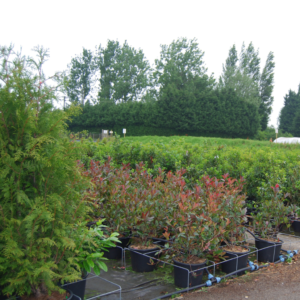Grabbing the opportunity to replace plant imports
On this page:
We all know how significant imports of garden plants from continental Europe are to the UK. Some figures suggest these annual imports are valued at more than £300 million, fuelled by the fact the UK demand for plants exceeds the value of UK production. Another significant factor is that some plants just cannot be grown as cost effectively, or to the same quality standard, in the UK as they can say, in southern Spain or Italy. However, demand may be changing.
Export suppliers to the UK are all too aware of the post Brexit increase in costs and hassle for their businesses, as are the UK businesses who import – and this might well supress both demand and availability of imported stock. Let’s face it, if you are a plant producer in continental Europe there’s a strong chance you will sell your plants to a country other than the UK if it’s going to be a simpler, quicker and cheaper process.
This initially causes a headache for our sector to meet customer demand, but also creates a superb and unique opportunity – to increase UK plant production and replace at least some of the £300 million we import each year.
The gauntlet has been thrown down, so are we going to pick up the trowel?
Where do we start? This in an opportunity we should be seizing with a united front so we can really capitalise on import substitution opportunities, and I would love to see our sector working closely with governmental and trade bodies in a variety of ways.

To increase UK plant production we need a coherent plan, with long term vision, to attract the workforce and the capital investment needed. As a grower, maybe you could lobby your MP (and perhaps hedge your bets and start a dialogue with the shadow secretary of state for DEFRA Steve Reed) for more investment and sector incentives to drive economic growth by increasing UK production. This in turn will help to mitigate against the biosecurity risks of importing and protect native plants.
We also need to use the data. Developing a portfolio of products to compete with imports, or fill their space, must begin with data.
We need information on the volume and value of specific species imported over a given period – this will enable growers to identify the size of the commercial opportunity. Next, growers need access to cheap capital to scale up production, either to fund capital costs such as protected cropping growing areas, or to fund working capital.
Perhaps the time is also right for a successful national campaign to promote British grown plants. We have similar campaigns in other industries, such as the Red Tractor Campaign, so we should be lobbying for a national Plant British campaign. It would appeal to all who want to see the UK thrive both economically and ecologically, lowering carbon footprints with every spade in the ground planting a UK plant.
Admittedly, not all plants from abroad can be grown efficiently, or effectively, in our UK climate. However, we should be remarketing many of the wonderful plants we do grow, so customers fall in love with them instead. We should be creating a portfolio of products that can be grown competitively in the UK that are good alternatives to those traditionally imported.

Granted, we will not be able to provide ‘perfect’ substitutes for some pants, such as olives, but how about Photinia, Bamboo and Buxus? Some of the most entrepreneurial, hardworking and creative people work in UK horticulture, so let’s get going and grab the opportunities available.


